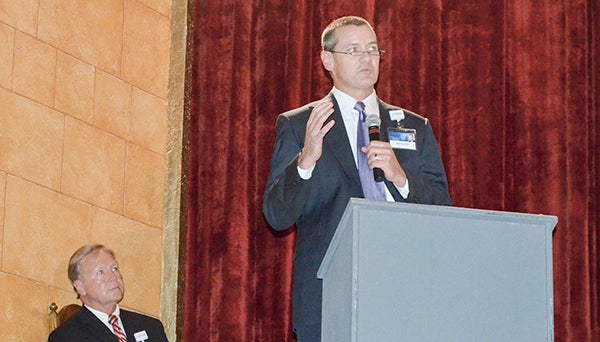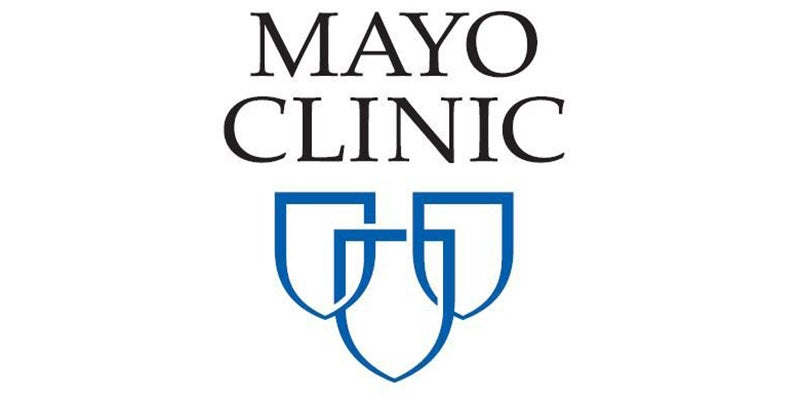‘A tremendous change’
Published 10:18 am Tuesday, October 29, 2013

Mayo Clinic Health System — Austin and Albert Lea CEO Mark Ciota speaks to the audience of a forum on health care changes Monday at the Paramount Theatre. Adam Harringa/adam.harringa@austindailyherald.com
Mayo leaders outline looming health care changes
The era of people going to primary care doctors for the bulk of their medical care is likely a thing of the past, according to local health leaders.
“It’s going to be a change for both the providers and the patients,” Mayo Clinic Health System CEO Mark Ciota said Monday night. “That’s what we’re going to have to work through the next three or four years.”
Mayo Clinic Health System — Austin and Albert Lea’s Ciota and CAO Steve Waldhoff outlined looming health care changes at a public meeting Monday night at the Paramount Theatre. With the Affordable Care Act — commonly called Obamacare — and changes to Medicare, the Austin area, like the nation, is on the cusp of major changes in health care.
“Nationally, healthcare is going through a tremendous change,” Ciota said. “And we are certainly right in the middle of it here in the Midwest and in Austin and Albert Lea.”
Perhaps the most difficult change for the public to embrace will be a greatly reduced emphasis on primary care physicians. Instead, patients will be treated by a team led by a physician to optimize and streamline care. That means a person won’t need to see his or her primary care physician to get a prescription or check their blood pressure; the person can see a team member, with the physician overseeing the process.
Waldhoff admitted it may not be an easy change for many.
“We have to embrace change,” Waldhoff said. “It is going to be different. Folks are going to want to push back.”
Most of the public is accustomed to having their own personal physician, but Waldhoff said the medical industry needs to move away from the system.
More than a third of the physicians in Minnesota are of retirement age, and medical schools aren’t capable to train enough doctors to fill the need, he said.
“We’re going to have to become a lot more creative in how we deliver care,” Waldhoff said
That could mean virtual treatment methods becoming more important and common, as people will be able to contact health providers online.
A growing disparity between healthcare costs and quality is fueling health care changes. The U.S. is No. 1 in money spent on healthcare per person, but the nation ranks 38th in cost. Nationwide, Ciota said businesses and individuals are spending a lot of money on health care, but not getting their money’s worth.
“We’re spending a lot of money and not getting the quality that people deserve,” Ciota said.
The changes, Ciota said, will be difficult and often disconcerting, but he said he’s confident Mayo will be well-positioned to weather changes.
“We will get through it, and we will be much better when we get done,” he said.
The concentration will be more on population health rather than individual health, according to Ciota. Part of the solution will be focusing more on health care and wellness, rather than sick care. That means treating people when they’re young and healthy, instead of when people become sick or have a chronic illness in an effort to eventually reduce costs.
“Our current health system is completely fragmented,” Ciota said.
The payment system for health care is also changing. Now, Ciota said the nation is in a fee-for-service model, but that could soon be changing.
“We don’t necessarily want to get paid every time you come in,” he said. “We want to get paid when you do well.”
Ciota said the health care debate has become politicized, but that’s something local health leaders want to stay out of.
“We want to stay out of that,” he said. “We want to focus on what our patients need.”




